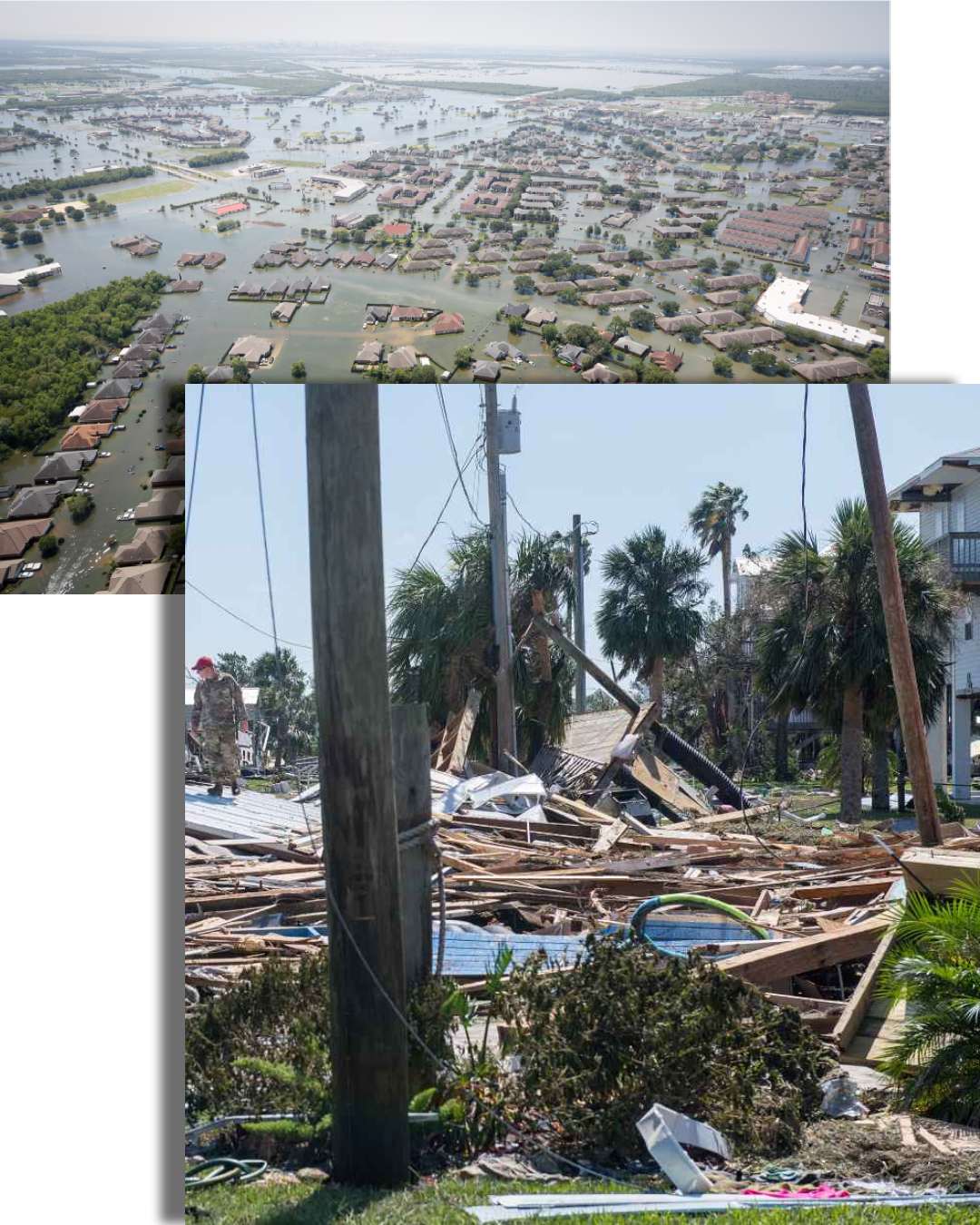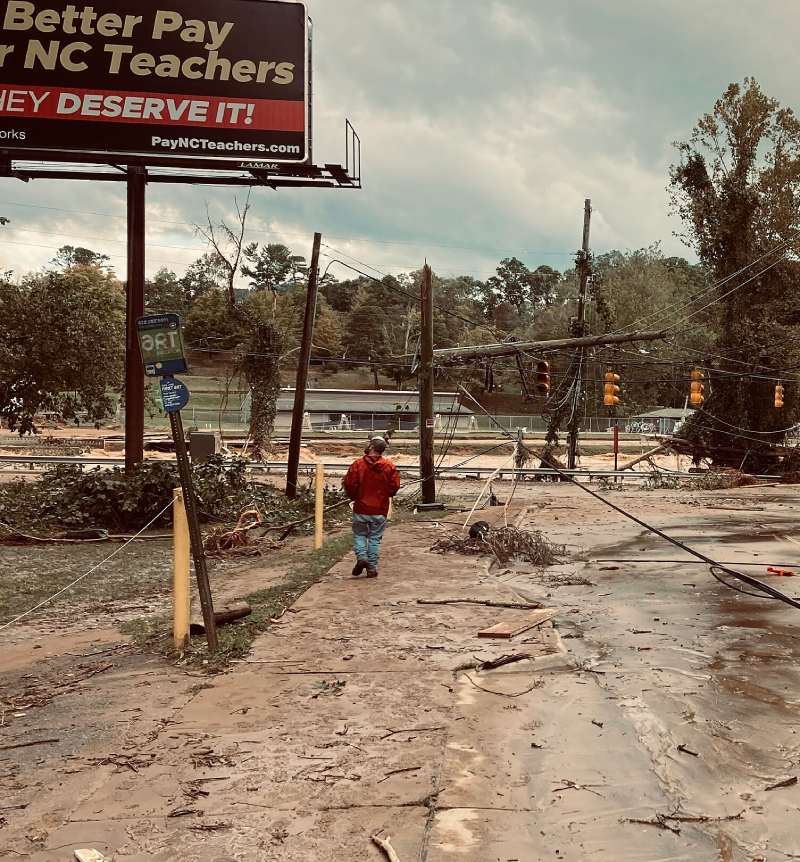Natural Disaster Relief Contracting
The United States Federal Emergency Management Agency, also known as FEMA, is an federal agency of the U.S. Department of Homeland Security. It was created in 1979 with the primary mission to coordinate responses to disasters that occur within the U.S. and provide relief to those affected by natural disasters.
In this guide by the Federal Contracting Center, we will focus on FEMA contracting for hurricanes and flooding, as these are some of the most common and devastating disasters that can strike a community. We will discuss how to become a FEMA contractor, what types of contracts are available, and tips for successful natural disaster contract bidding.
How to Become a FEMA Contractor
FEMA’s primary method of sourcing contractors is through the System for Award Management (SAM) website, where businesses can register and list their capabilities. Businesses must regularly check for new contract opportunities and submit proposals or bids accordingly.
To become a FEMA contractor, you must meet certain requirements, including:
- Be registered in SAM: All federal contractors must register in sam.gov before bidding on contracts with any government agency.
- Have relevant experience: This varies depending on the type of contract being pursued, but FEMA typically requires a minimum level of experience in disaster response or related fields.
- Meet insurance requirements: Contractors must carry adequate insurance coverage to protect themselves and FEMA from liability.
- Be compliant with federal regulations: Businesses and non-profit organizations who contract with the U.S. government must comply with all applicable laws, regulations, and executive orders, including those related to equal opportunity employment and labor standards.
For assistance with SAM registration and renewal, capability statements, and more, the Federal Contracting Center offers government contract consulting services to businesses and organizations interested in contracting with FEMA.
Types of FEMA Disaster Relief Contracts
FEMA uses various types of contracts to effectively manage disaster response and recovery. Some of the most common types of contracts used by FEMA include:
- Fixed-price contracts: is where a set price is agreed upon regardless of actual costs incurred, providing clear expectations for both parties. This is often used when the scope of work is well-defined.
- Cost-reimbursement contracts: in contrast to a fixed price-contract, are used when project costs are uncertain. These contracts allow FEMA to reimburse disaster relief contractors for allowable expenses up to a specified limit, in addition to a fee for profit. They offer flexibility but require more oversight to ensure cost efficiency.
- Time-and-material contracts: involve payment based on time spent and materials used, suitable for projects where the scope is not clearly defined. These contracts require careful monitoring to control costs and prevent project overruns.
- Pre-positioned contracts: are established before disasters strike, ensuring resources are immediately available for rapid deployment when needed. They provide a proactive approach to disaster management, reducing response times significantly.
- Standby contracts: are similar but typically involve maintaining a pool of pre-qualified contractors ready to provide services on short notice. This ensures that essential functions can be quickly mobilized in response to a disaster.
- Indefinite delivery, indefinite quantity (IDIQ) contracts: offer flexibility in terms of quantities and timelines. They are used when FEMA anticipates a recurring need for supplies or services but cannot precisely predict the timeline or amount. These contracts allow for efficient procurement, reducing administrative delays during times of crisis.
Primary Services for
Hurricane & Flood Response
FEMA’s hurricane relief contracts are critical components of FEMA’s disaster management strategy, aimed at providing swift and efficient assistance to affected communities. These contracts encompass a wide range of services and supplies essential for immediate relief and long-term recovery efforts. Key areas typically include debris removal, temporary housing solutions, infrastructure repair, and medical services.
- Debris Removal and Infrastructure Repair: Quick restoration of roads, bridges, and essential services is imperative following hurricanes or floods. Contracts in this category focus on clearing debris to facilitate emergency access and initiating repair work on public infrastructure.
- Temporary Housing Solutions: FEMA often needs to secure temporary housing options for displaced residents. This includes contracts for mobile housing units, hotels, and the setup of temporary shelters, ensuring that affected individuals have a safe place to stay.
- Medical and Health Services: During disasters, access to medical care is vital. Contracts often include provisions for mobile medical units, emergency healthcare staff, and supplies to manage injuries or disease outbreaks.
- Water and Food Supply: Essential contracts are also established to provide clean water and food to populations impacted by hurricanes and floods. These contracts ensure there is no shortage of critical resources during the initial response phase.
Successful execution of these contracts requires contractors that not only meet FEMA’s qualifications but also have a demonstrated ability to respond rapidly and effectively in emergency situations. By establishing these contracts ahead of time or as soon as possible after a disaster, FEMA ensures communities receive timely and adequate support, minimizing the long-term impacts of hurricanes and flooding.
How to Bid on FEMA Contracts
Overview of the Bidding Process
Before bidding on a disaster relief contract, it’s important to understand the overall process. Typically, the steps involved in bidding on and securing a FEMA contract are as follows:
- Identify potential contracts: Monitor SAM.gov for open contracts that align with your capabilities.
- Review contract requirements: Carefully review all aspects of the contract, including scope of work, timeline, and evaluation criteria.
- Prepare necessary documents: This may include a federal capability statement, past performance records, insurance certificates, and more.
- Submit proposal or bid: Once all required documents are prepared, submit them according to the instructions outlined in the solicitation.
- Await evaluation and award decision: Your proposal or bid will be evaluated based on the stated criteria, and if selected, you will receive an award notification.
- Negotiate terms: In some cases, FEMA may negotiate contract details with the selected contractor before finalizing the agreement.
- Begin work: Upon successful negotiation of contract terms, work can begin as outlined in the contract.
Creating a Competitive Bid
To increase your chances of securing a FEMA hurricane contract, it’s essential to submit a competitive bid. Some tips for creating a competitive bid include:
- Thoroughly review the scope of work: Make sure you understand what services or supplies are needed and ensure that your capabilities match what is being requested.
Highlight past performance and relevant experience: Use specific examples and data from past projects to showcase your competence in similar situations. - Provide detailed cost estimates: Clearly outline all costs associated with the project, including labor, materials, and any additional expenses.
- Emphasize unique qualifications: If you have unique qualifications or certifications that set you apart from other bidders, be sure to highlight them.
- Follow all instructions: Pay close attention to the solicitation’s instructions and ensure that you submit all required documents in the specified format and deadline.
Bid Evaluation & Selection
After bids are submitted, FEMA will evaluate them based on a set of criteria outlined in the solicitation. Some factors that may be considered during evaluation include past performance, cost estimates, and unique qualifications. Once evaluations are complete, FEMA will select the most qualified bidder for contract negotiation.
It’s important to note that selection is not solely based on price; other factors such as quality of work and timelines also play a significant role in decision making. Therefore, it’s important to provide thorough and accurate information in your bid to showcase your capabilities and increase your chances of being selected.
Begin the FEMA Registration Process Today!
FEMA hurricane and flood response contracts play an important role in providing vital services and supplies to communities affected by natural disasters. These contracts allow for efficient procurement, facilitating timely and effective disaster response efforts. By understanding how to register with FEMA, the common types of contracts FEMA uses, what services are needed for hurricane relief, and the bidding process for contracts, businesses can increase their chances of winning FEMA contracts and make an impact by contributing to disaster relief efforts.
If you are ready to take the next step in securing FEMA contracts and contributing to disaster relief efforts, we encourage you to reach out to our FEMA contract consultants at the Federal Contracting Center. With our expertise in U.S. government contracts consulting services, we can guide you through every step of the FEMA contracting process to ensure your business is thoroughly prepared for success.





